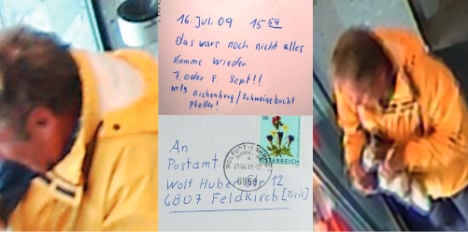The unknown man suspected of carrying out 11 robberies has been giving police in Vorarlberg the run around since 2008 when he robbed a Sparkasse bank. He went on to carry out ten further robberies in post offices and banks throughout the province, with the latest taking place in February in Lochau.
He became known in the media as the ‘postcard robber’ after he sent postcards to investigators, saying that he was not yet finished and would “come again.”
Described as 1.85 metres tall man from Vorarlberg aged between 40 and 65-years-old, police are now hoping a tip off from local resident can help them finally catch the robber.

LPD Vorarlberg
They hope the leaflet featuring photos of the man distributed to 28,000 homes through the province, including in Dornbirn, Bregenz and Feldkirch, will reach people who might not have seen the case reported in the media.
“Our assessment is that we are dealing with an inconspicuous Vorarlberg resident, who people would not at a first glance think capable of being a robber,” said police spokesman Stefan Schlosser, adding that all they are missing is a name.
The €10,000 is being offered by Vorarlberg banks for any relevant information.
Anyone with information should contact the police on +43 59 133 80 3333 or [email protected]



 Please whitelist us to continue reading.
Please whitelist us to continue reading.
Member comments